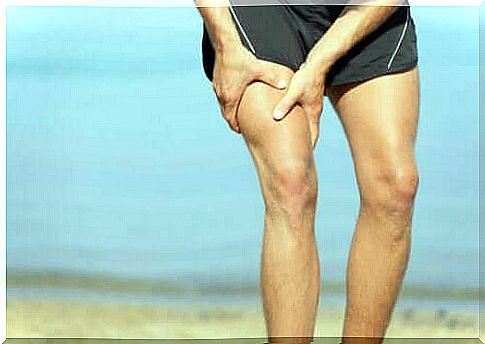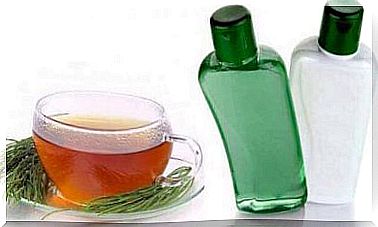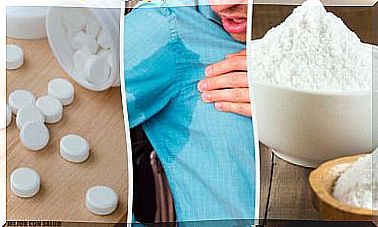Groin Problems: Why Does It Occur?

Groin problems are caused by a partial tear of the small fibers of the inner thigh adductors. It can be mild or severe. With rest and proper treatment, patients usually make a full recovery.
These problems often occur during activities related to recreational activities, jobs that require a lot of physical exertion, and vehicular accidents, among many other situations. If you want to learn more about groin problems and how they are treated, keep reading!
How groin problems arise
Groin problems are when one of the muscles of the inner thigh is stretched, injured or torn. Often the adductors are also involved. The muscles of the inner thigh can be divided into two groups.
Muscles that go from the pelvis to the thigh
- the pectineus
- adductor minimus
- adductor longus
Muscles that go from the pelvis to the knee
- the gracilis
- adductor magnus
There are various causes that can cause groin problems. It is actually always caused by movement. Some of these factors include:
- Sports in which the athlete sprints, accelerates or, for example, performs sudden changes in direction.
- Short, stiff muscles. Muscles that are not properly warmed up and stretched are more likely to tear.
- Poor condition or fatigue of the muscles. Weak muscles are less able to withstand the stress of exercise, and muscles that are tired lose some of their ability to absorb energy to avoid injury.
- Resuming activities too soon after injury.
While this condition is usually related to the practice of exercise, it is not always the case. In general, any overly aggressive stretch of a muscle or direct blow can lead to groin problems.
The Symptoms of Groin Problems

If you feel pain in the thigh and groin during any physical activity, you should consider quitting.
The Rady Children’s website states that three degrees of groin problems can be distinguished. As you will see below, each of them causes different symptoms:
- First grade. Mild pain that may not be noticeable until after exercise is over, followed by a feeling of tightness and tenderness in the groin.
- Grade two. Moderate pain and tightness in the groin, along with some mild swelling and bruising. In addition, walking may be affected and running may be difficult.
- Grade three. Severe pain, significant swelling in the groin area and bruising, and an inability to press the legs together. Walking will then be very difficult.
The most common symptoms of groin overload are:
- both swelling and bruising in the groin area
- muscle spasms
- weakness in the affected leg
- some degree of difficulty walking.
Diagnosis
First, the doctor will ask the patient what he or she was doing before feeling the pain that prompted him or her to make an appointment with the doctor. In general, the diagnosis is differential. In other words, the doctor examines the patient to rule out other conditions, such as a sports hernia.
When it comes to first-degree groin problems, less than 10% of the muscle fibers are torn. Grade two is used in situations where 10% to 90% of the fibers are torn.
Grade three means that the muscle is completely or almost completely torn or even torn. In certain cases, a doctor will order an MRI to determine both the extent of the tear and its precise location.
Treatment of groin problems

Treatment depends on the severity of the injury. Milder cases can heal with a two-week rest, while a full tear may require up to three months of recovery. Below are some general guidelines patients should follow in order to recover quickly:
- Take a rest. Do not perform activities that cause pain during the recovery process.
- cold pack. Applying ice as a cold compress to the groin area for 15 minutes about four times a day is a good way to relieve pain and swelling. Always remember that you should never apply ice directly to the skin.
- Medication. Some over-the-counter medications can help treat mild to moderate pain, such as nonsteroidal anti-inflammatory drugs (NSAIDs).
- compression. In some cases, a compression bandage may be applied to the affected area to prevent swelling. The physical therapist can determine the best options and apply this bandage.
- Raise, stretch and strengthen. Strengthening consists of performing a series of exercises and postures that help the affected muscle recover. It is important to consult a professional for both the best techniques and their correct execution.
- Warmth. You should only apply heat if you plan to resume physical activity.
In general, we can say that the treatment is based on rest, so that the muscle can recover. However, it is important that you do not stop doing certain stretching exercises to prevent muscle atrophy from disuse. In addition, the recovery process should always be supervised by a professional.
Tips to prevent groin problems
Sometimes it is very difficult to prevent these types of injuries, especially for professional athletes. Up to 16% of all injured football players go to a doctor for a problem in the groin. In addition, this injury is very common in sports such as hockey, tennis and basketball.
The last piece of advice we want to share with you is to always stretch before exercising and not put too much strain on yourself. If you feel pain in your groin area, stop exercising for a few days and take care of the affected area. The best treatment for groin problems is without a doubt simply preventing them from occurring.
Avoid this injury deliberately
As you have read, groin overload is a fairly common condition that results from straining the pelvic muscles during physical activity. Planning your workouts properly, stretching as part of the warm-up, and stopping any activity when you feel pain can help minimize groin problems.









